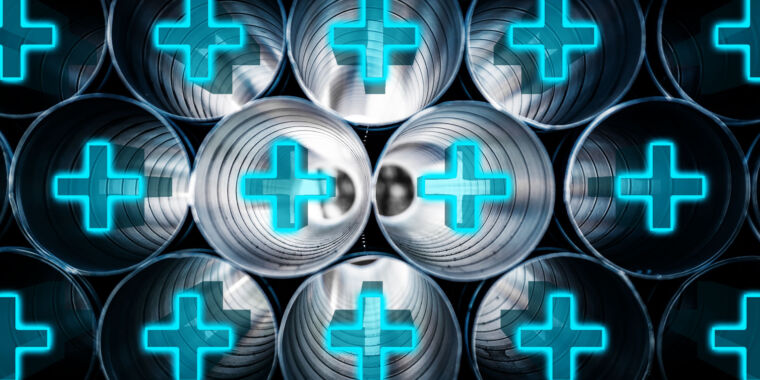
Cheap, high capacity, and fast: New aluminum battery tech promises it all

Aurich Lawson | Getty Photographs
You will find a traditional irony with new know-how, that adopters are compelled to limit themselves to two of the 3 items absolutely everyone wants: rapid, affordable, and superior. When the tech is batteries, adoption is even far more challenging. Inexpensive and fast (charging) still matter, but “superior” can indicate various items, this kind of as gentle excess weight, low volume, or long existence span, depending on your requirements. Nevertheless, the similar kinds of trade-offs are concerned. If you want definitely rapid charging, you can expect to likely have to give up some ability.
Those people trade-offs retain investigate into alternate battery chemistries heading irrespective of the large direct lithium has in conditions of engineering and production capabilities—there’s still the hope that some other chemistry could provide a massive fall in price or a massive raise in some measure of general performance.
Currently, a paper is currently being posted that seems to offer you a lower rate put together with a major increase in a number of of individuals actions. The aluminum-sulfur batteries it describes present very low-priced raw supplies, aggressive dimensions, and much more capacity for each bodyweight than lithium-ion—with the huge additionally of completely charging cells in significantly significantly less than a minute. The just one clear issue it has appropriate now is that it requires to be at 90° C (nearly the boiling issue of drinking water) to work.
Can aluminum?
Men and women have been pondering batteries primarily based on aluminum for a while, drawn by their superior theoretical capability. Although each individual aluminum atom is a bit heavier than lithium, aluminum atoms and ions are bodily smaller, as the greater optimistic cost of the nucleus pulls in the electrons a little bit. In addition, aluminum will commonly give up as numerous as three electrons for every atom, meaning you can shift tons of cost for every single ion involved.
A big challenge has been that, chemically, aluminum form of sucks. Many aluminum compounds are really insoluble in drinking water, their oxides are particularly stable, and so on—it’s simple for a thing that must be a minimal facet-response to cripple a battery just after a couple demand/discharge cycles. So, even though perform has ongoing, the higher theoretical capacities have often appeared like a little something that would under no circumstances be realized in exercise.
The vital to the new work was realizing we’d presently solved one of the major troubles with creating an aluminum metallic electrode—we had just carried out so in a totally distinctive subject. Pure steel electrodes provide large boosts in simplicity and quantity, considering the fact that there’s no serious chemistry involved, and you will not need extra components to things the steel ions into. But metallic tends to deposit erratically on battery electrodes, ultimately manufacturing spines termed dendrites that expand till they destruction other battery parts or shorter the cell out totally. So, figuring out how to deposit metal evenly has been a major hurdle.
A key realization in this article is that we previously know how to deposit aluminum evenly. We do it all the time when we want to electroplate aluminum onto some other metal.
It is really typically done making use of a molten aluminum chloride salt. In just the molten salt, the aluminum and chlorine ions have a tendency to kind extensive chains of alternating atoms. When aluminum is deposited on to a area, it tends to occur out of the center of these chains, and the actual physical bulk of the rest of the chain helps make that simpler to do on a flat surface.
Inside the molten salt, the aluminum ions can also shift swiftly from one electrode to the other. The huge problem is that aluminum chloride only melts at 192° C. But mixing in a bit of sodium chloride and potassium chloride introduced this down to 90° C—below the boiling point of drinking water and suitable with a larger sized array of more elements.
Salt sandwich
With that, the researchers had two-thirds of a battery. One electrode was aluminum metal, and the electrolyte was the liquid aluminum chloride. That leaves a 2nd electrode to be determined. Right here, there ended up a lot of illustrations of storing aluminum as a chemical compound with aspects underneath oxygen on the periodic table, these kinds of as sulfur or selenium. For imaging applications, the staff labored with selenium, making an experimental battery mobile and confirming that it was behaving according to expectations.
Imaging of the aluminum showed that, soon after some cost and discharge cycles, the area was rather blocky, but there have been no huge or pointy extensions coming out of it that could hurt the battery. The reactions at the selenium electrode appeared to begin in the molten salt in advance of ending up on the electrode floor. In general, the cell showed steady effectiveness more than dozens of cycles and the form of superior capability for every excess weight that aluminum need to deliver. So, the staff moved on to setting up and screening the cells they were truly fascinated in: aluminum sulfur.
At slow charges of discharge, the aluminum sulfur cells experienced a charge potential per bodyweight that was in excess of 3 moments that of lithium-ion batteries. That figure went down as the price of charge/discharge went up, but effectiveness remained excellent. If the cell was discharged above two hours and charged in just six minutes, it still had a charge capacity per body weight that was 25 per cent bigger than lithium-ion batteries and retained about 80 p.c of that ability immediately after 500 cycles—well past what you’d see with most lithium chemistries.
If you dropped charging occasions down to a bit around a minute, the capability for every bodyweight was roughly equal to that of a lithium-ion battery, and a lot more than 80 {5376dfc28cf0a7990a1dde1ec4d231557d3d9e6448247a9e5e61bb9e48b1de73} of that capacity was however out there after 200 cycles. The battery cell could even tolerate a comprehensive demand in beneath 20 seconds, though capability for every bodyweight was only a bit more than 50 percent what you would get out of lithium-ion.
